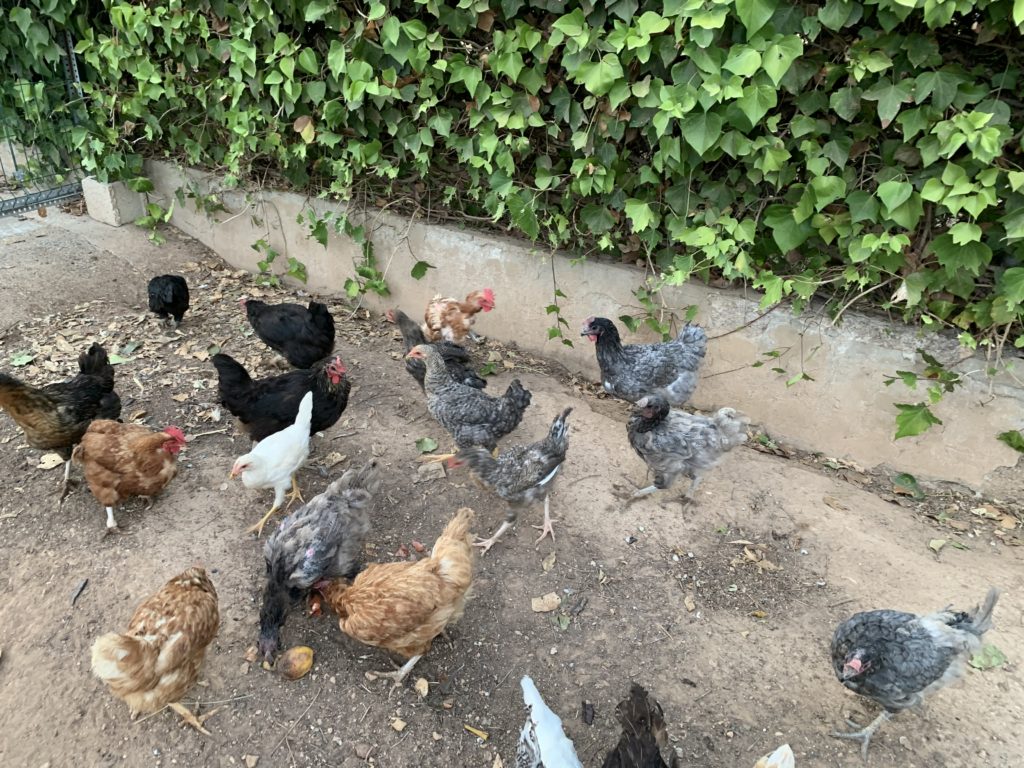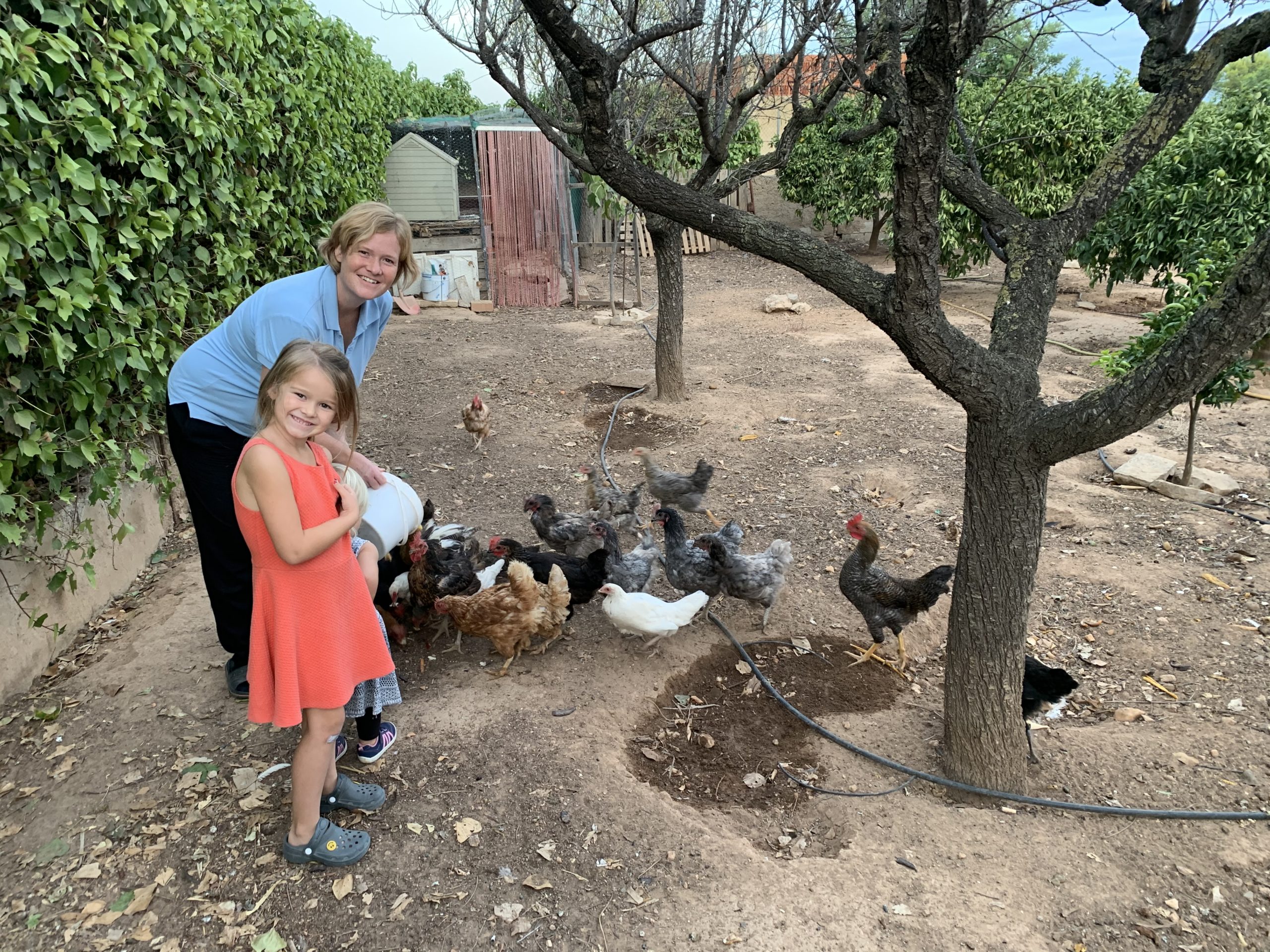I always thought that having pets and chickens would be incompatible with my urban lifestyle, my love for travelling and my busy days as a working mum. But 2020 has taught me a different lesson! While in lockdown in our countryhouse I saw in the social media that more and more of my friends around the world were starting their own vegetable gardens including their own farm fowls. So I decided to talk with my Swiss friend Linda Buergi, who has been a chicken expert for many years. Here is a short extract with some of Linda’s tipps in case you would like to get started, too!
Question 1. When did you start having chickens and what was your motivation?
Linda: We got our first chickens in 2013, after we bought a property (in Oregon, USA) with a small horse barn on it. We thought of a way to use the barn and came up with the idea of chickens.
I love having chickens for many reasons. I like the fact that I don’t have to buy supermarket eggs anymore, which inevitably come from larger factory farms (even if they are free range, organic or cage free). I love knowing that our chickens live a long, happy and healthy life.
I love teaching our children where food comes from, teach them to appreciate what it takes to produce a single egg, and how we can humanely treat the animals that produce our food. It also teaches them that in nature, food isn’t available all day, every day. Our chickens go through cycles and sometimes lay more eggs than we can eat, and other times we don’t have enough eggs to make the dish we would have liked to make.
Chickens are also a great way to recycle food scraps. Old bread, leftover pasta and vegetable peels get turned into eggs. And we use composted chicken manure in our garden to grow vegetables: circular economy at its best. However, feeding food leftovers to chickens is strictly regulated in the EU and chicken owners should do their own research.
We also hatch out eggs every spring and love watching the little chicks grow from adorable fluff balls to lanky teenagers to beautiful roosters or plump chickens.
Like all pets, chickens can die of old age, or disease. It’s a great thing for children to get exposed to the cycle of life in this way. The first time one of our chickens died, my husband told our daughter that it had escaped and found a better home, but eventually we decided to tell her the truth. She took it much better than expected, and it’s become a fact of life that she knows how to deal with. The same goes for the rooster mounting the chickens – an awkward conversation at first, but she now proudly shares her knowledge with her friends when they happen to witness and ask about the strange ‘stacking behaviour of the chickens’.
Eventually I would like to have more local chicken breeds. Our chickens are currently the standard, industrial breeds. Contributing to preserving some of the old chicken breeds that are quickly disappearing, would make me feel even better about having chickens. Those breeds might have lower egg production, but they are much better adapted to the climate of our region and reflect some of our cultural heritage.
Question 2. How much time do you need to invest in the chickens every week? For an urban person who likes to travel, is this still something feasible if you have enough space in your garden?
Linda: Time investment is minimal: we fill the feeder once a week, and have automatic watering system. Going on vacation for up to a week is no problem. For longer absences we always find some eager helpers that enjoy a few days of egg collecting.
Question 3. How many eggs do your chickens produce every week and do you taste the difference between industrial eggs, even if organic or your own?
Linda: Our chickens are with us until they die of natural causes (except for the roosters, we eat those when they reach full size, which is usually at about 9 months – in stark contrast to ‘industrial’ broiler chickens who reach their slaughtering weight in less than 2 months!). The older the chicken the fewer eggs it lays, and egg production also depends on the feed. Our daily egg harvest is usually about half of the number of chickens we have – and can fluctuate a lot.
Thank for sharing your experiences!


